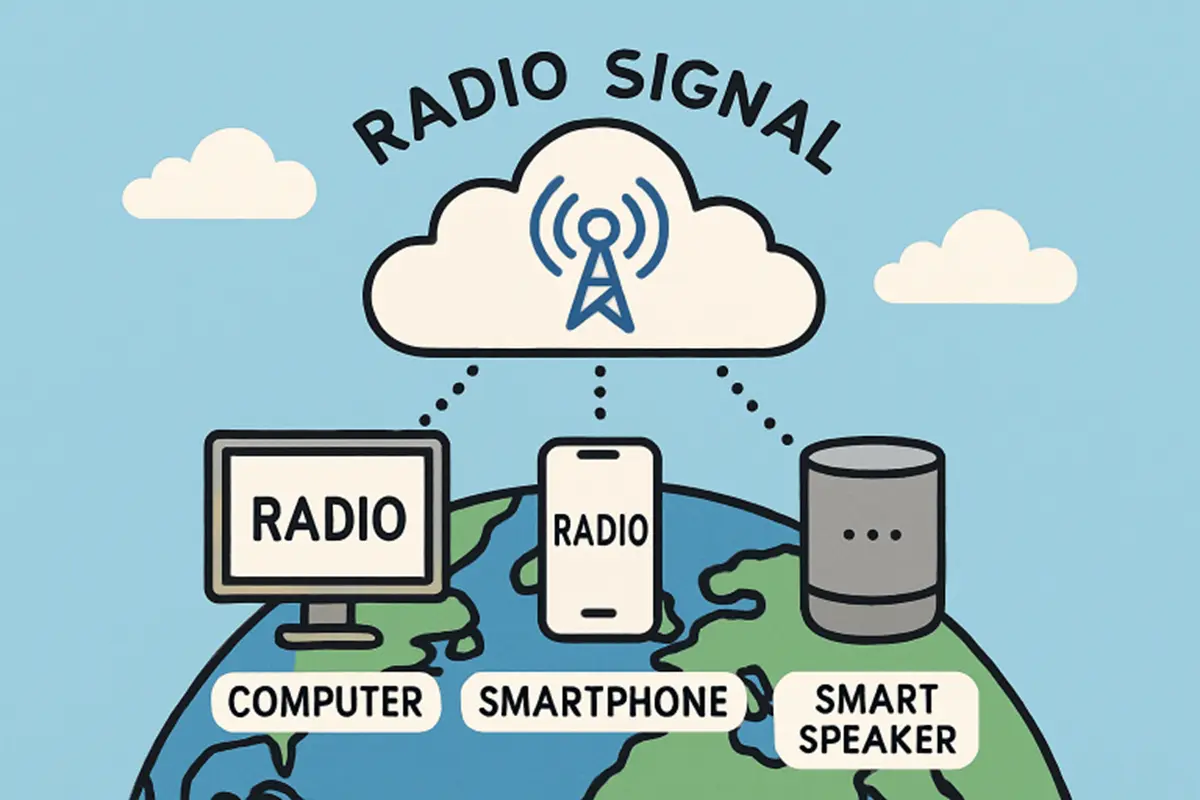Key Takeaways
- Cloud-based hosting provides scalable and cost-effective solutions for online radio stations.
- It enhances operational efficiency through automation and centralized management.
- Broadcasters can reach a global audience with improved streaming quality and reliability.
Table of Contents
- Introduction
- Benefits of Cloud-Based Hosting
- Enhancing Operational Efficiency
- Global Reach and Audience Engagement
- Case Study: KYST-AM’s Cloud Transition
- Future Trends in Internet Radio
- Conclusion
Introduction
The digital revolution has brought internet radio to the forefront of global media. Moving to the cloud doesn’t just make technical sense—it allows stations to serve listeners far beyond the local market and react quickly to changes in broadcasting demand, all while lowering barriers to entry. As cloud platforms evolve, their tools make it easier for content creators to work from anywhere, unleashing more creative potential and responsive programming.
Thanks to cloud-based internet radio hosting, the world of online broadcasting is dramatically transforming. More radio stations are moving away from traditional servers and embracing modern, flexible solutions that allow them to broadcast to listeners worldwide. For those considering starting or scaling an online station, radio hosting through a cloud platform offers significant efficiency, scalability, and global reach enhancements.
Cloud hosting isn’t just about technical improvements – it’s reshaping how radio content is created, managed, and distributed. By shifting critical infrastructure offsite, broadcasters can focus on programming and audience engagement, free from the worries of server maintenance, power outages, or geographical limits. This shift broadens the potential for creativity and listener interactivity, bridging gaps between broadcasters and their audiences like never before.
In addition to greater flexibility, the cloud model ensures that even small or independent stations can deliver reliable, high-quality streams, competing alongside established broadcasters. These solutions offer an affordable entry point and the ability to scale resources up or down as needed. Whether an established station or a hobbyist DJ, broadcasters now have access to automation, centralized management, and expanded accessibility, revolutionizing content delivery on a global scale.
As the broadcast landscape modernizes, cloud-based internet radio solutions enable stations to operate more efficiently, decrease downtime, and enhance each listener’s experience. This paves the way for innovation and growth across the sector, ushering in a future where radio is accessible everywhere, anytime. For further insights on digital media trends, authoritative resources like Forbes’ analysis of cloud computing in media illustrate the ongoing changes impacting broadcasters and listeners alike.
Benefits of Cloud-Based Hosting
Cloud-based internet radio hosting offers advantages that go beyond traditional infrastructure:
- Scalability: Cloud servers adjust seamlessly as listenership grows, handling spikes during popular shows or events without performance dips.
- Cost-Effectiveness: Stations bypass expensive hardware, software, and maintenance costs, paying for only what they use in terms of bandwidth and storage.
- Reliability: Top providers maintain redundant systems, preventing downtime and ensuring consistent, high-quality streaming around the clock.
Check out this CNBC overview of cloud infrastructure and media streaming for a deeper look at the technical backbone supporting streaming services.
Enhancing Operational Efficiency
Cloud adoption enables broadcasters to streamline station management in key ways:
- Automation: Auto-DJ and scheduling functionalities allow 24/7 programming with reduced manual intervention.
- Centralized Management: All broadcasting components—playlists, advertisements, analytics—are controlled from a unified dashboard, consolidating daily tasks and boosting productivity.
- Remote Accessibility: Broadcasters, producers, and even guest DJs can all contribute from different locations, fostering collaboration and creative content creation regardless of geography.
These features translate into greater consistency, lower operating costs, and more responsive programming, keeping stations agile and competitive.
Global Reach and Audience Engagement
One of the most significant advantages of a cloud-hosted station is the ability to engage a worldwide audience:
- High-Bandwidth Streaming: Broadcasters can serve thousands of simultaneous listeners without buffering and latency issues, even with limited local internet infrastructure.
- Multi-Platform Compatibility: Streams are accessible on desktop, mobile, smart speakers, and car infotainment systems, ensuring every listener can tune in from their device of choice.
- Interactive Features: Chat rooms, live polls, and listener requests deepen engagement, fostering community and two-way communication between station and audience.
Case Study: KYST-AM’s Cloud Transition
A compelling real-world example can be seen in KYST-AM, a Houston-based station that recently transitioned to a fully cloud-based infrastructure. By shifting all incoming satellite feeds and broadcast operations to the cloud, KYST-AM dramatically cut hardware expenditures and day-to-day operational costs. The new model enabled the team to focus on programming quality and listener outreach, rather than technical maintenance. According to RadioInsight, this shift exemplifies the transformative power and flexibility of modern radio hosting workflows.
Future Trends in Internet Radio
Several emerging trends are shaping the future of cloud-based internet radio hosting:
- Artificial Intelligence: AI enables automated playlist curation, dynamic advertising, and personalized listener experiences based on real-time data.
- Enhanced Analytics: New analytics suites empower stations to understand audience behavior, tailor content, and optimize their programming strategies for better listener retention.
- Integration with Emerging Technologies: Internet radio is increasingly integrated with voice assistants, connected vehicles, and smart home systems, further expanding audience reach and interactive potential.
Conclusion
Cloud-based internet radio hosting is revolutionizing online broadcasting, offering unparalleled flexibility, resilience, and opportunities for innovation. As more stations leverage these technologies, expect an explosion of creative content, deeper audience interaction, and coverage that knows no borders.

